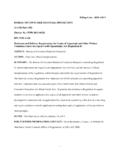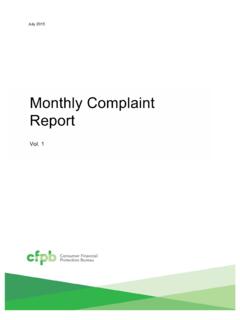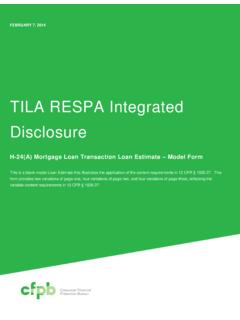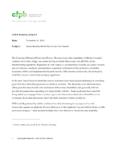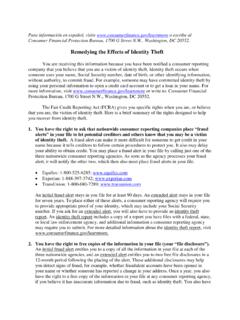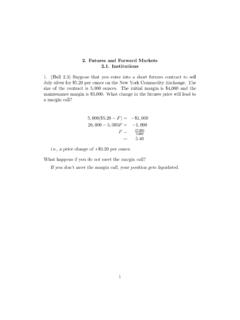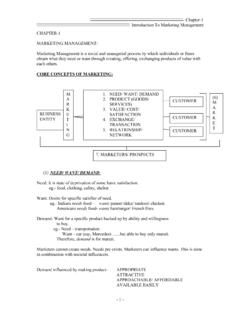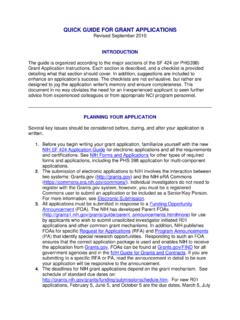Transcription of Reflecting on needs versus wants
1 1 of 4 Consumer FinancialProtection BureauTo find this and other activities go to: 2022 BUILDING BLOCKS TEACHER GUIDER eflecting on needs versus wants By thinking about their own expenses, students explore how differentiating between needs and wants can inform daily financial decisions and rules to live by. KEY INFORMATIONB uilding block: Executive function Financial habits and norms Grade level: High school (9 12)Age range: 13 19 Topic: Spend (Budgeting, Buying things)School subject: CTE (Career and technical education), English or language arts, Social studies or history Teaching strategy: Cooperative learning, Personalized instruction Bloom s Taxonomy level: Understand, Analyze Activity duration: 45 60 minutes National Standards for Personal Financial Education, 2021 Spending: 12-1, 12-2 These standards are cumulative, and topics are not repeated in each grade level. This activity may include information students need to understand before exploring this topic in more goalsBig ideaUnderstanding the difference between needs and wants helps you to be strategic about your spending.
2 Essential questions How can you tell the difference between a need and a want ? How does understanding the difference between needs and wants help inform your financial decisions? Objectives Differentiate between needs and wants in daily spending choices Consider how needs and wants influence their spending choicesWhat students will doAssess their own spending decisions by completing the Reflecting on needs versus wants remember to consider your students accommodations and special needs to ensure that all students are able to participate in a meaningful 2022 BUILDING BLOCKS TEACHER GUIDE2 of 4 Reflecting on needs versus wants Preparing for this activity Make copies of all student materials for each student, or prepare for students to access them electronically. To support Spanish-speaking students, there is a Spanish version of this activity. You can use just the worksheet available at A Spanish version of the guide is available at you ll needTHIS TEACHER GUIDE Reflecting on needs versus wants (guide) MATERIALS Reflecting on needs versus wants (worksheet) key financial conceptsUnderstanding the differences between needs and wants helps you make a budget to manage your spending and informs your daily spending choices.
3 Covering all your needs before you spend money on your wants is a wise financial habit. needs are basic things people must have to survive (such as food, clothing, and shelter), resources they may need to do their jobs (such as reliable transportation and the tools of the trade), and resources to help build and protect their money and property so they can meet future needs (such as emergency savings and insurance). wants are upgrades and other things that would be nice to have but aren t necessary for living, income, or protecting what you have. To tell the difference between a need and a want , ask yourself, Do I need that (new jacket, video game, specialty coffee), or do I just really want it? TIPB ecause financial products, terms, and laws change, students should be encouraged to always look for the most up-to-date 2022 BUILDING BLOCKS TEACHER GUIDE3 of 4 Reflecting on needs versus wants Teaching this activityWhole-class introduction Ask one or two students to share an example of something they purchased recently.
4 Then ask the rest of the students to identify if they think that item is a need or a want . Read the Exploring key financial concepts section to students to elaborate on needs and wants . Be sure students understand key vocabulary: Budget: A plan that outlines what money you expect to earn or receive (your income) and how you will save it or spend it (your expenses) for a given period of time; also called a spending plan. needs : Basic things people must have to survive (such as food, clothing, and shelter), resources they may need to do their jobs (such as reliable transportation and the tools of the trade), and resources to help build and protect their money and property so they can meet future needs (such as emergency savings and insurance). wants : Upgrades and other things that would be nice to have but aren t necessary for living, income, or protecting what you CFPB s financial education glossary at or group work Distribute the Reflecting on needs versus wants worksheet, or have students access it electronically.
5 Students can work individually, in pairs, or in groups to complete this activity. Tip for differentiating instructionYounger students or students from households with different incomes may be less aware of or less directly involved in purchasing. Consider adapting this activity for them. When done as a group activity, students each add a few ideas to a group list. Make the question more general by giving students a role-play opportunity. For example, you may say, Imagine you are [insert favorite athlete or movie star]. What do you spend money on each month? Summer 2022 BUILDING BLOCKS TEACHER GUIDE4 of 4 Reflecting on needs versus wants Ask students to think of at least 10 things they, their family, or friends have bought or spent money on recently. Students will record the purchased items in either the needs or wants column in the table in the worksheet. As students complete their lists, ask them to analyze their spending (or their family s or friend s spending) and make a hypothesis on how their own spending habits compare to others.
6 Students will then answer the reflection questions on their students to share their answers to the reflection next stepsConsider searching for other CFPB activities that address the topic of spending, including budgeting and buying things. Suggested activities include Spending scenarios and Playing a saving and spending game . Measuring student learningStudents answers on their worksheets and during discussion can give you a sense of their understanding. Keep in mind that students answers may vary, as there may not be only one right answer. The important thing is for students to have reasonable justification for their answers.


